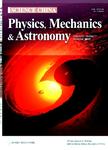Full time-domain nonlinear coupled dynamic analysis of a truss spar and its mooring/riser system in irregular wave
Full time-domain nonlinear coupled dynamic analysis of a truss spar and its mooring/riser system in irregular wave作者机构:Guangdong Electric Power Design InstituteChina Energy Engineering Group Co. Ltd. Department of Ocean Engineering Ocean University of China State Key Laboratory of Coastal and Offshore Engineering Dalian University of Technology State Key Laboratory of Ocean Engineering Shanghai Jiao Tong University Technology Research DepartmentChina National Offshore Oil Corporation
出 版 物:《Science China(Physics,Mechanics & Astronomy)》 (中国科学:物理学、力学、天文学(英文版))
年 卷 期:2014年第57卷第1期
页 面:152-165页
核心收录:
学科分类:07[理学] 08[工学] 070102[理学-计算数学] 0701[理学-数学] 0801[工学-力学(可授工学、理学学位)]
基 金:supported by the National High Technology Research and Development Program of China(Grant No.2006AA09A109-3) the Important National Science&Technology Specific Projects(Grant No.2008ZX05026-06-02)
主 题:coupled method full time-domain second-order truss spar rod theory irregular wave
摘 要:A new full time-domain nonlinear coupled method has been established and then applied to predict the responses of a Truss Spar in irregular wave. For the coupled analysis, a second-order time-domain approach is developed to calculate the wave forces, and a finite element model based on rod theory is established in three dimensions in a global coordinate system. In nu- merical implementation, the higher-order boundary element method (HOBEM) is employed to solve the velocity potential, and the 4th-order Adams-Bashforth-Moultn scheme is used to update the second-order wave surface. In deriving convergent solu- tions, the hull displacements and mooring tensions are kept consistent at the fairlead and the motion equations of platform and mooring-lines/risers are solved simultaneously using Newmark-fl integration scheme including Newton-Raphson iteration. Both the coupled quasi-static analysis and the coupled dynamic analysis are performed. The numerical simulation results are also compared with the model test results, and they coincide very well as a whole. The slow-drift responses can be clearly ob- served in the time histories of displacements and mooring tensions. Some important characteristics of the coupled responses are concluded.



